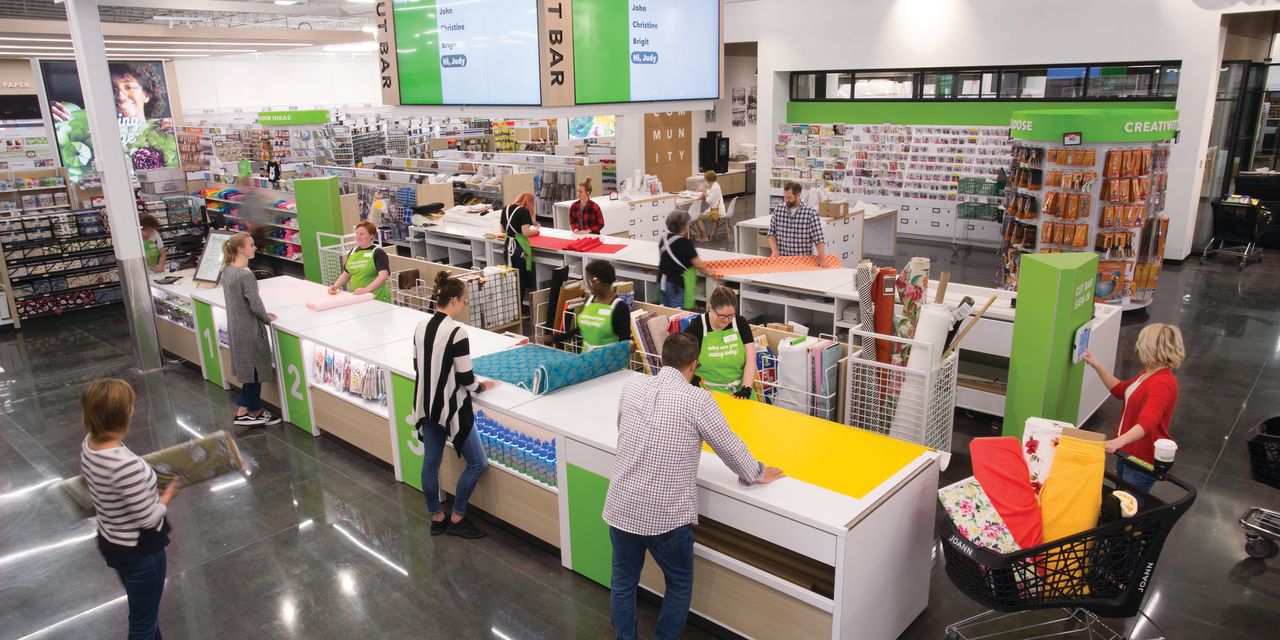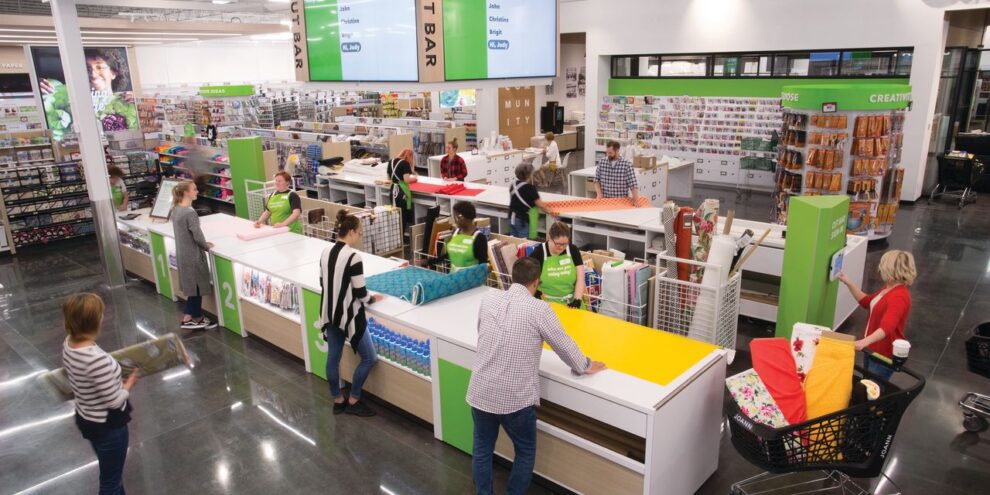
Arts-and-crafts retailer Joann Inc. JOAN, has filed its initial public offering prospectus with plans to offer 10.9 million shares priced at $15 to $17 each.
The Hudson, Oh.-based company expects to trade on the Nasdaq under the ticker “JOAN.” There are 11 banks underwriting the deal, led by BofA Securities and Credit Suisse.
Joann was previously a publicly traded company, but was taken private by private-equity firm Leonard Green & Partners in 2011 in a $1.6 billion deal that left if saddled with debt. The company was founded nearly 75 years ago in Cleveland.
Joann calls itself the leader in the sewing category, but is growing in the broader arts-and-crafts category, which has gained interest during COVID-19 as shoppers spend more time at home and seek out pastimes.
See: Dollar Tree expanding in fresh food, higher prices, and new store formats
Michaels Cos. Inc. MIK, -0.09% announced on March 3 that it will be taken private in a $3.3 billion deal, and the following day reported fourth-quarter profit and sales that beat expectations.
And Dollar Tree Inc. DLTR, +0.39% announced last week during its fourth-quarter earnings that it has completed the nationwide rollout of Crafter’s Square, its expanded arts-and-crafts department.
The tailwinds Joann has enjoyed during COVID-19 were accompanied by headwinds.
“[O]ur momentum was temporarily interrupted in fiscal year 2020 by the unanticipated headwind of incremental U.S. tariffs on Chinese imports that we estimate, before mitigation, would have amounted to $75 million of additional annual costs,” wrote Wade Miquelon, chief executive of Joann, in a letter included in the prospectus.
However, it was able to reduce its debt load, which stood at $1.36 billion on Nov. 2, 2019 using internally generated cash flow. That allowed the company to retire and repay $433.8 million in principal amount, leaving it with a debt balance of $929.7 million as of October 31, 2020.
Miquelon has been CEO since February 2019 after serving as chief financial officer and as CEO on an interim basis.
The company has been undergoing a strategic turnaround since 2016, with a focus on digital enhancement and a goal of making gains across “creative products.” Joann’s assortment now spans 95,000 SKUs (stock-keeping units) in stores, and as many as 245,000 SKUs online.
Also: ThredUp IPO: 5 things to know about the secondhand e-commerce site before it goes public
Joann had net sales of $2.241 billion in 2020, up from $2.324 billion in 2019, and $2.314 billion in 2018. But it swung to a net loss of $546.6 million in 2020, after net income of $35.3 million in 2019 and $96.5 million in 2018.
Joann says the company generated $423 million in net sales during the 12 months ending Oct. 31, 2020 from its omnichannel platform. As of the end of the fiscal third-quarter, the company had more than 69 million customers in its database.
Joann’s fiscal year ends on the Saturday closest to the last day of January.
Joann estimates proceeds from the IPO will come to $78.2 million, assuming an IPO price of $16. The company plans to use the proceeds from the offering to pay down its $72.8 million in outstanding borrowings under a Second Lien Facility.
Here are five more things to know about Joann as it prepares to go public:
Joann plans to offer a dividend
Joann says it will pay a quarterly dividend of 40 cents per share.
Joann has proprietary fabric designs and patterns
Among the company’s private-label brands are Casa and Place & Time.
The company also has a partnership with WeaveUp that allows customers to create their own fabrics and other items using digital printing tools.
And Joann has a patented technology called Ditto that helps users with pinning and cutting sewing patterns, “the most common pain point reported by our customers.”
The majority of Joann customers make items to give or donate
Joann says that 70% of its customers make their creations to give away or donate.
Another quarter of customers make items to be sold on platforms including eBay Inc. EBAY, -1.71% and Etsy Inc. ETSY, +0.79%
Joann has acquired eight million new customers since Feb. 1, 2020, many of whom made their own face masks. Joann also put a program in place called “Make to Give,” which donates mask-making materials to any individual or organization that needs them.
“Customers typically purchase from Joann with a project in mind that requires several component items,” the prospectus said.
“In that vein, we believe our physical footprint is an advantage, as most customers regularly want to explore what is new, see how various items and colors work together, see how a fabric drapes, feel the texture and seek help from our experienced team members.”
Many of the new customers are younger and more affluent, and tend to spend more, with many purchasing a crafting machine and subsequently spending an average of more than $500 in the following year.
Joann quotes data from SVP Worldwide showing that the 65% of new sewing enthusiasts in 2020 were 30 years old or younger.
Don’t miss: 25 small-cap stocks that analysts expect to rise as much as 64% over the next year
Joann’s core customer is a woman in her upper 40s with a higher-than-average household income.
Half of Joann’s store locations have been identified for a refresh over the next seven-to-10 years
Joann has four levels of store redesign, costing $150,000 on the low end for a “light” refresh to $3 million for the most extensive revamps. Joann has conducted 24 pilots to devise this tiered plan.
There were 855 Joann stores in 49 states as of Jan. 30, 2021. The company says that a select group are in need of the most extreme redesign.
“Based on the positive outcomes and learnings from these pilots as well as additional improvements being developed, we believe we can achieve an average net sales uplift ranging from 5% to 25% from projects where we refresh an existing location.”
Leonard Green & Partners will own more than two-thirds of Joann stock once the company is public
Joann is controlled by Leonard Green & Partners, and the firm will own 69% of the company’s common stock once shares begin trading, meaning it will continue to make most of the decisions.
As long as Leonard Green owns 50% of common stock, it can nominate up to five directors once the company is public. If it owns a smaller percentage, it can nominate fewer directors. Leonard Green would have to own 10% of shares or fewer to lose the ability to nominate at least one director.
“Accordingly, LGP currently controls the election of our directors and could exercise a controlling interest over our business, affairs and policies, including the appointment of our management and the entering into of business combinations or dispositions and other corporate transactions,” the prospectus said.






